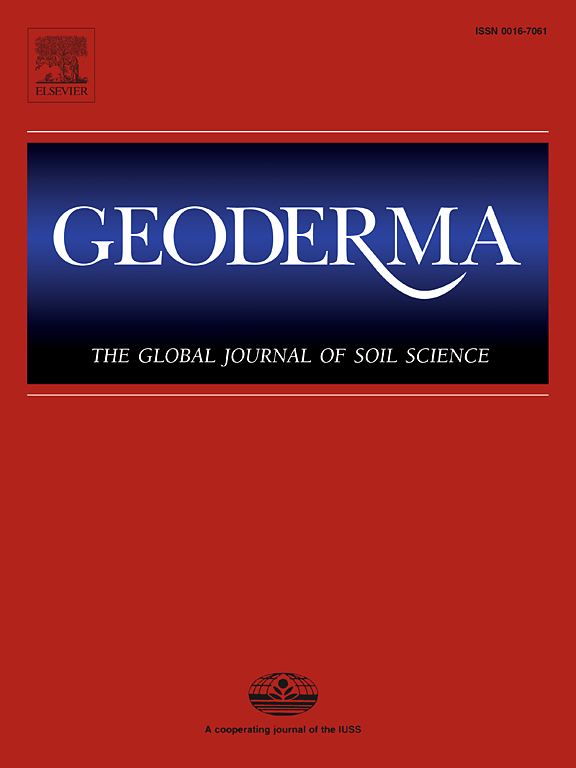不连续永久冻土带(西伯利亚西部)泥炭地土壤温度对比
IF 5.6
1区 农林科学
Q1 SOIL SCIENCE
引用次数: 0
摘要
永久冻土泥炭地的碳循环受水文和温度的强烈影响,并与微地形密切相关。在这项研究中,我们评估了西伯利亚西部散发性永久冻土带的土壤温度状况,这是目前正在发生巨大变化的最气候敏感地区之一。基于地形测绘、摄影测量、土壤、植被和温度观测,我们将泥炭地主要地貌的土壤热状态与积雪、水路、泥炭厚度和地面植被联系起来。在平丘泥炭地复合体中,厚的泥炭沉积物和凸起的形态(局部海拔)导致冬季少量的积雪积累,导致泥炭高原温度最冷。薄泥炭层和类似地衣-灌木植被的泥炭高原土壤活性层厚3倍。邻近莎草沼的土壤在夏季保持明显的凉爽,但在冬季由于厚积雪的绝缘作用而保持明显的温暖。相比之下,热岩溶湖排水盆地的土壤由于缺乏泥炭和高大的莎草上保留的厚雪提供的有效绝缘而冻结到较浅的深度。总的来说,即使在西伯利亚西部的一个小型泥炭地复合体内,土壤温度也会在几百米内发生显著变化,类似于在不同气候带之间观察到的典型差异。随着气候持续变暖,预计活动层厚度将增加,导致超级冻土水的更多积累,最大的扩张发生在泥炭地的外围地带。本文章由计算机程序翻译,如有差异,请以英文原文为准。

Contrasting soil temperature regimes in peatlands of the discontinuous permafrost zone (Western Siberia)
Carbon cycling in permafrost peatlands is strongly influenced by both hydrology and temperature and is closely linked to microtopography. In this study, we assessed soil temperature regimes in the sporadic permafrost zone of Western Siberia, one of the most climate-sensitive regions currently undergoing dramatic changes. Based on topographic mapping, photogrammetry, soil, vegetation and thermometric observations, we related the soil thermal regimes of the dominant peatland’s landforms to snow cover, water pathways, peat thickness and ground vegetation. In flat-mound peatland complex, thick peat deposits and convex forms (local elevations) induced a small accumulation of snow in winter, which led to coldest temperatures on the peat plateaus. The peat plateau soils with a thin peat layer and similar lichen-shrub vegetation had three time thicker active layer. Soils in adjacent sedge-Sphagnum fens remained noticeably cooler in summer but warmer in winter due to the insulating effect of thick snow cover. In contrast, soils in drained basins of thermokarst lakes froze to a shallower depth due to the absence of peat and the efficient insulation provided by thick snow retained on tall sedges. Overall, even within a small peatland complex in Western Siberia, soil temperature regimes can vary significantly over just a few hundred meters, resembling differences typically observed across distinct climatic zones. With ongoing climate warming, the active layer thickness is expected to increase, leading to a greater accumulation of suprapermafrost water, with maximum expansion occurring in the peripheral zones of the peatland.
求助全文
通过发布文献求助,成功后即可免费获取论文全文。
去求助
来源期刊

Geoderma
农林科学-土壤科学
CiteScore
11.80
自引率
6.60%
发文量
597
审稿时长
58 days
期刊介绍:
Geoderma - the global journal of soil science - welcomes authors, readers and soil research from all parts of the world, encourages worldwide soil studies, and embraces all aspects of soil science and its associated pedagogy. The journal particularly welcomes interdisciplinary work focusing on dynamic soil processes and functions across space and time.
 求助内容:
求助内容: 应助结果提醒方式:
应助结果提醒方式:


